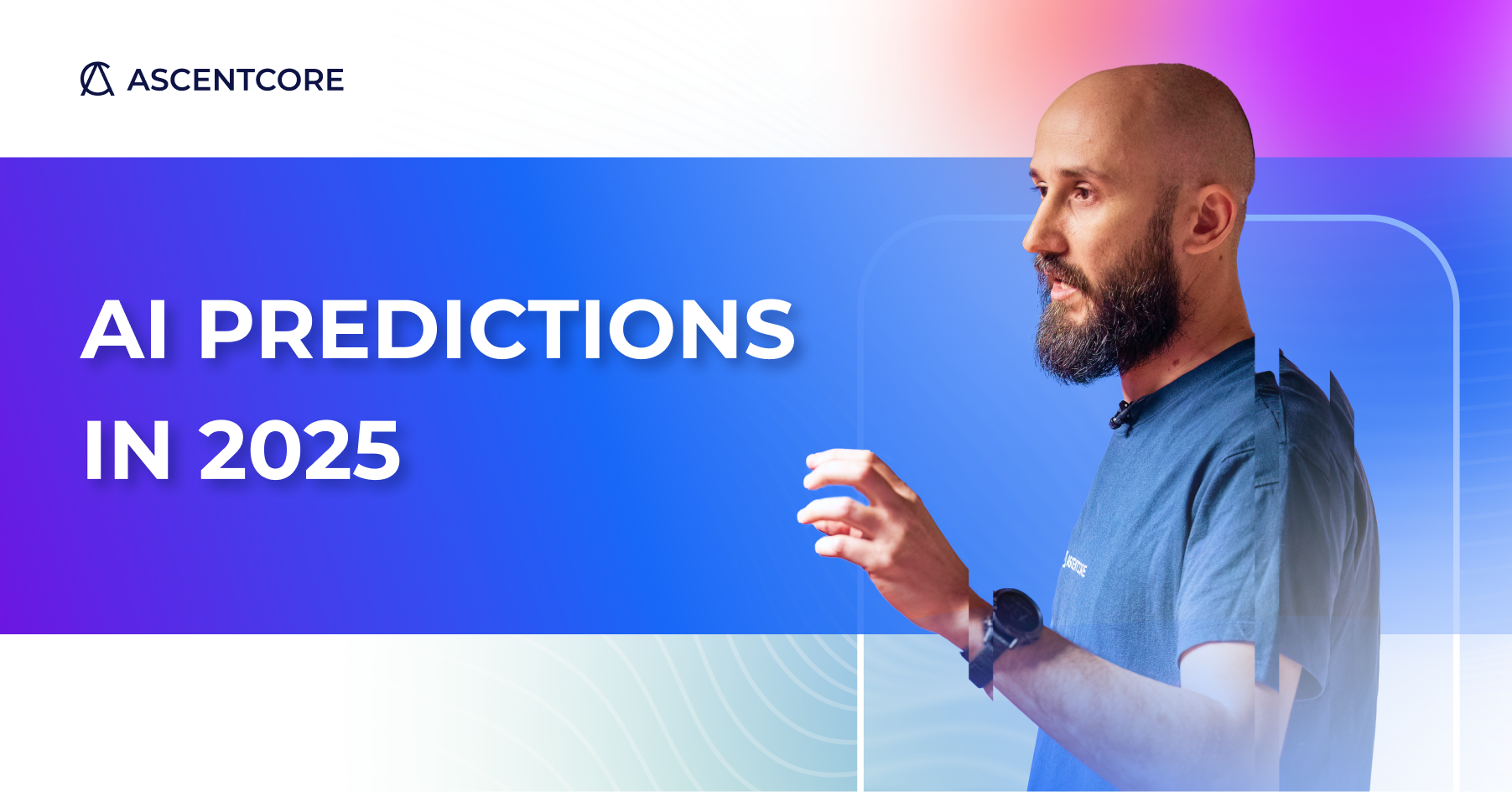As we look back at 2024, it’s clear that Large Language Models (LLMs) have made a massive impact on everyday life. From improving search experiences and personal assistants to serving as creative brainstorming partners, LLMs have truly hit the mainstream.
The rapid emergence of high-quality open-source models has sparked intense competition for the traditionally closed-source leaders, and we’re seeing a thriving ecosystem of research and development around the infrastructure needed to make LLMs both reliable and scalable. Meanwhile, new layers of abstraction—such as chat interfaces and specialized APIs—are making it easier than ever to integrate LLMs into a wide range of tools and workflows.
Fast forward to 2025, and we can anticipate some key developments taking shape:
1. Narrowing the Gap with Real-World Business Needs
Companies will move beyond experimental proof-of-concepts, as LLMs begin to plug directly into operational workflows and business-critical decision-making. AI Agents are rapidly becoming the standard for task automation, revolutionizing how organizations access and utilize information.
With the ability to drill down into unstructured data, LLMs enable dynamic exploration, allowing users to retrieve information at varying levels of detail—whether high-level summaries for executives or deep technical breakdowns for specialists. This adaptability means that the same data can now be leveraged across different organizational layers, presenting insights in a way that best suits each role.
Moreover, AI Agents will drive the aggregation and normalization of data, ensuring consistency and coherence across multiple sources, transforming raw, disparate information into structured, actionable intelligence. This shift will not only streamline decision-making but also redefine how businesses harness knowledge at scale.
2. New Frameworks for Enterprise Integration
We’ll see the rise of specialized frameworks that streamline how companies can “import” LLM reasoning into their applications. These frameworks will handle model selection, fine-tuning, data pipelines, and compliance, making AI adoption more accessible across various industries.
Organizations are no longer in a race to deploy their own AI models; instead, they are focusing on integrating AI into their existing internal tooling through workflow automation solutions that are AI-aware. This shift is driving the rise of a new generation of frameworks—primarily open-source—that will serve as the backbone for data collection, aggregation, processing, and exposure.
These frameworks will enable seamless interaction between AI models and enterprise systems, ensuring that businesses can harness AI capabilities without the overhead of training and maintaining their own models. As AI-driven workflows become standard, organizations will benefit from more intelligent automation, enhanced decision-making, and a unified approach to managing both structured and unstructured data across various departments and use cases.
3. Smaller, Domain-Focused Models
Expect more specialized LLMs optimized for specific tasks—think finance, healthcare, retail, and beyond. Crucially, these models will be deployable on low-power or edge devices, reducing cloud costs and latency while improving data privacy. Smaller domain-focused models represent the crucial tradeoff between power consumption and output quality, offering organizations a more sustainable approach to AI adoption.
While massive LLMs provide impressive versatility, their computational demands are immense, leading to high operational costs and significant energy consumption. Organizations must recognize that scaling AI responsibly requires balancing efficiency with effectiveness. By adopting smaller, domain-specific models tailored to their industry or use case, businesses can achieve high-quality outputs without the excessive overhead of general-purpose LLMs. This shift not only reduces infrastructure costs but also ensures a more sustainable and scalable AI strategy, enabling enterprises to deploy AI where it truly matters without overburdening their resources.
4. Reimagined User Interactions
As LLMs become more embedded into everyday tools, we’ll see interfaces shift toward LLM-driven reasoning. Users will interact with AI through natural language prompts and guided reasoning steps, enabling more intuitive and powerful interactions for non-technical audiences.
This shift is already reshaping how we design user interfaces, with the “magic input box” becoming a central element in modern applications. Instead of rigid UI components like buttons, dropdowns, and predefined workflows, users are now expected to communicate their needs directly to the AI in natural language.
While this unlocks unprecedented flexibility, it also introduces a new challenge—users must now know what to ask and how to frame their queries effectively. As a result, usability is evolving beyond traditional interface design; the focus is now on educating users on how to interact with AI-driven systems efficiently. This includes providing contextual guidance, adaptive suggestions, and real-time feedback to help users refine their inputs.
The next frontier of UX will be about bridging the gap between human intent and AI capabilities, ensuring that people can harness the full power of these intelligent systems without feeling lost in an open-ended conversation.
5. Generative AI Fuels Media
Beyond text, generative AI in image and video will power a new era of creativity and personalization in the media industry. From hyper-realistic CGI in films and advertisements to real-time video editing and on-demand content creation, generative AI will become a cornerstone of immersive, interactive experiences—opening up unprecedented opportunities for storytelling, marketing, and artistic expression.
Closing Thoughts
Overall, 2025 is shaping up to be the year where LLMs move from the hype cycle into fully realized business and consumer applications—ushering in an era of accessible, specialized, and truly transformative AI experiences.



